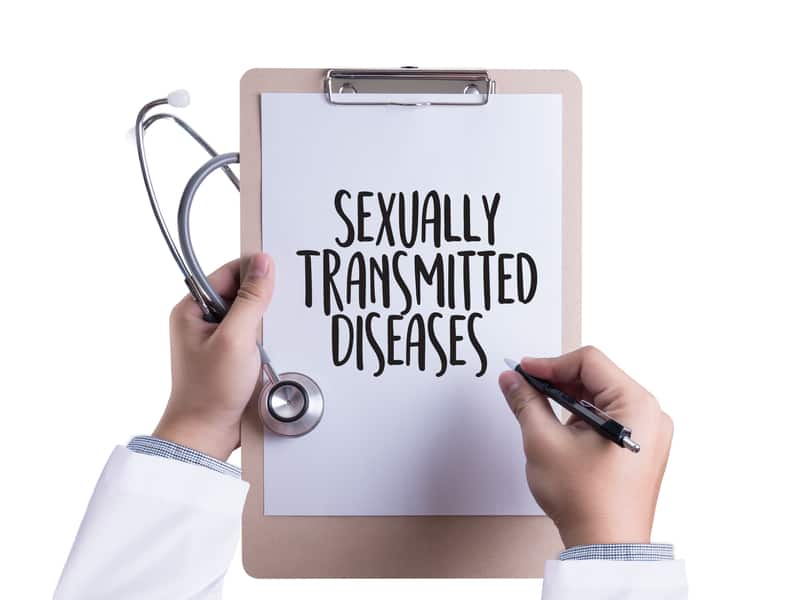
8 STI myths you shouldn’t believe
Chlamydia, gonorrhea, syphilis… You may have heard of these, but can you distinguish between STI myths and reality? We’ve got you covered.
It’s easy to tell if someone has an STD
Not every STD causes clear signs and symptoms. Take HPV, for example, a virus that can cause genital warts and even cervical cancer. Almost all sexually active people will get it at some point in their lives, but there are no tests and rarely ever any symptoms.
Using two condoms lowers the risk of getting an STD
If one condom is good, using two condoms is even better, right? It may logically sound right, but it isn’t. Using two condoms at once actually increases the risk of them slipping or breaking, which means less protection. Stick to just one condom.
You can’t get an STD from oral sex
Yes, you can. Any form of intimacy, whether it’s vaginal, anal, oral or just genital skin-to-skin contact, can give you an STD. So always be safe when you get intimate with someone: use condoms or dental dams.
All STDs are easy to treat
Unfortunately, that’s not the case. While some, like chlamydia, are indeed easily treatable, there is no cure for others, like HIV.
You can’t get the same STD more than once
It’s true that your immune system can build antibodies against some STDs and partially protect you this way, but that doesn’t mean you can’t get the same STD twice. Also, other STDs, like herpes and HIV, aren’t curable, which means you can potentially pass them on to your sex partners.
Condoms protect against all STDs
This might come as a shock, but condoms can’t prevent the transmission of all STDs. Some of them, like HPV and herpes, can be found anywhere around your genitals. And a condom won’t cover these areas, leaving you at risk of infection.
That’s not an excuse to drop the condom though!
I’ve only ever had one partner, so I can’t have an STD
Unfortunately, even if you’ve only had one partner, you can get an STD. If both of you have never had any kind of sexual contact before, the risk is low. But, some infections (like HPV) are very common, and can be transmitted through skin contact alone. So there is a risk of infection, even if you’ve only ever had one partner.
You can’t have two STDs at once
Yes, you can. In fact, having an STD might make it even easier to get another one. If you have genital warts, for example, HIV can enter the body more easily. And chlamydia and gonorrhea appear together so often, that if you have one of them, the doctor is bound to test you for the other.
Have you heard any more myths? Share them below, on Facebook or our discussion board and get an answer asap!

just i want to know
about …
just i want to know
about gonorrhea
Hey Nyesiga, Gonorrhea is a…
Hey Nyesiga, Gonorrhea is a Sexually Transmitted Disease. Check out the following article for more information about Gonorrhea;- https://lovemattersafrica.com/safe-sex/stds-stis/gonorrhoea
Hi! Can I get infected if I…
Hi! Can I get infected if I don’t ejaculate during sex?
Hi Salim, if you have sex…
Hi Salim, if you have sex with a person who is infected with a Sexually Transmitted Infection, you will be at a risk of getting infected whether or not you ejaculate. It’s important you use a condom if you are not certain of your partners status. Check out this article;- https://lovemattersafrica.com/safe-sex/sti-prevention/staying-safe
Can you get an sti while…
Can you get an sti while masturbating
Hi Steve, thank you for your…
Hi Steve, thank you for your question, typically you cannot but you could spread infection from one part of the body to the other.
I have a question can you…
I have a question can you get STIs again and you were treated recently
Hi Mark, thank you for…
Hi Mark, thank you for reaching out to us. It is indeed possible for an STI to make a comeback, or just not go away if it is a particularly tough strain. If you are experiencing a resurgence, kindly see a medical practitioner for a comprehensive diagnosis and advice on the way forward.